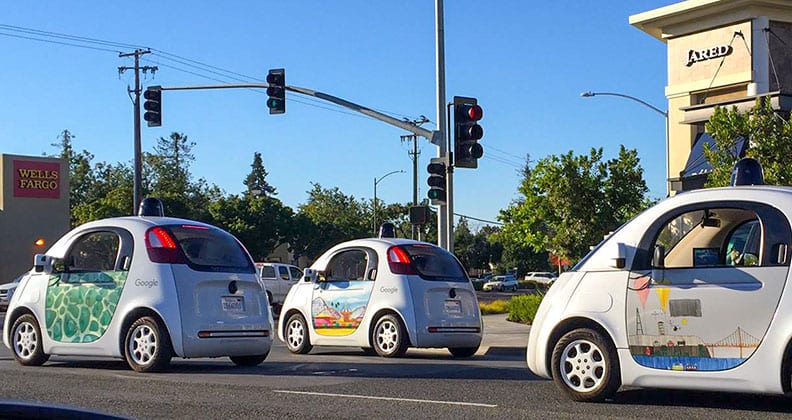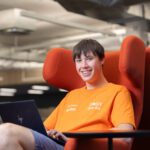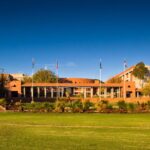‘Distinguished Engineer’ Carl Solder knows the anatomy of a computer network to the Nth degree. At the San Jose campus of tech giant Cisco, his sights are on virtualisation and AI – a time warp from his childhood in suburban Perth and his fascination with a futuristic new gadget, the calculator.
Solder has been a part of the Silicon Valley tech community for the past 11 years, 15,000 kilometres from Curtin’s Bentley campus where his career began with a Bachelor of Business in Information Processing. Earlier this year he was appointed Vice President at Cisco, the tech giant known for networking innovations and its immersion in Internet of Things (IoT), Cloud and domain security markets.
In 1984, he graduated from the Western Australian Institute of Technology, now Curtin University, at a time of unprecedented growth in technology careers. Across Australia, organisations were investing in IT and lifting national productivity and economic growth, similar to the US.
“Yep, we had a smorgasbord of opportunities,” he recalls. “Companies were coming out to campus to recruit – government departments, mining companies, tech companies, banks – all trying to lure us before we’d graduated.”
Although I’m speaking with Solder by phone, and we’ve never met, it’s impossible not to see the passion in his expression and gestures as he describes his student days in Perth, the joys of his profession, and life in San Jose.
So did he study business and IT because geek grads were hot property?
“No … say it was because of the rain,” he jokes. “I went with a few mates from school to Open Day at Bentley, and I was looking at courses like engineering, astronomy or architecture, but couldn’t decide – none of them grabbed me.
“But just as we were leaving it started raining heavily. We ran into the nearest building, the business school, and one of the staff came over and asked if we’d like to try writing a computer program. I was hooked.
“It was a great course. I remember most of my lecturers; I was very impressed with Heinz Dreher[1].
“On our first day he greeted every one of about 150 students at the doorway, shook hands, introduced himself. When everyone was seated he pointed to us individually and rattled off our names, and said that about 20 per cent of us would be here at the end of the course. He was close – only 35 graduated.”
Does he remember when his ‘techie’ side emerged?
“Ah, early on. My parents had a friend who was an insurance salesman and he had a calculator. I was totally engrossed with it,” he laughs.
Punch cards, PCs and network protocols
A decade on, Solder was creating computer programs in a new high-school subject called Mathematics Enrichment, but without a calculator or other technology.
“We punched holes in cards using paperclips, the decks were then sent to UWA for processing, and the following week we got the print output of our programs. It took a whole week!”
And if that sounds ludicrous to Generation Insta, imagine doing advanced maths without a calculator. Solder was among the last of the Australians forced to use a slide rule in high school, because, despite the availability of calculators, they were banned in exams.
Three years later, he graduated with a double major in Computer Programming & Systems Analysis and a job with the most admired tech company in the world: IBM.
“IBM had a great training program. I was based in their new Perth office but for the first six months I spent alternate months at the training facility in Sydney. They were the early days of mainframes, PCs and Unix machines.
“I was a bit of an introvert but we also learned the soft skills, and I found a passion for the engagement side of technology.”
After 11 years with IBM and ready for more challenges, he grabbed an opportunity at Cisco Systems, a high growth tech innovator based in Silicon Valley. Cisco (after San Francisco – hence the ‘bridge’ brandmark) was one of the first companies to develop routers for multiple network protocols, and in 1995 the company was establishing offices in Australia. Solder quickly became one of their high-achieving Australians.
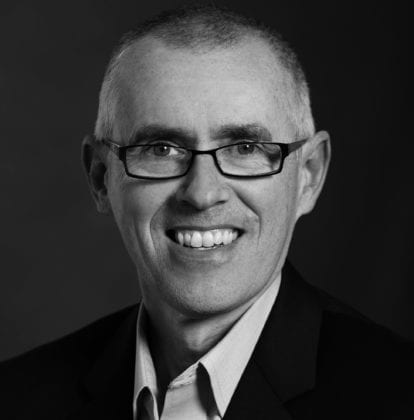
“I was their first systems engineer in WA, and I had the job of setting up the Perth ‘sales office’ – on the 18th floor of St Martin’s Tower. It had a desk, a chair and a phone.
“One of the tech guys in Melbourne visited regularly and we worked on systems design, engineering and implementation. Basically everything related to networking support for routers, switches, firewalls and VOIP.
‘I think I was pretty good but I wasn’t special. Cisco had a group of incredibly talented systems engineers in Australia – they all passed their CCIE no trouble.’
The CCIE – Cisco Certified Internetwork Expert – is a notoriously difficult accreditation for those who design, build and implement complex networks. Cisco established the program in 1993, and since then the global IT industry has used it to delineate the top tier of network experts. Less than one per cent of network professionals achieve CCIE, which usually takes two or three years of study, and few pass at their first attempt. Solder passed the CCIE first go and in his first year.
“The first official CCIE lab was given the number 1024, which is 2 to the power of 10, and every one who’s passed the CCIE has been given a number, starting at 1025. Mine is 2416.”
After four years overseeing exponential business growth in WA, he transferred to a technical role based in Singapore. “I was able to spread my wings and travel throughout across Asia, helping large enterprises set up their networks”.
And then … the tech bubble burst?
“Actually the slump of 2000 didn’t really affect us. Cisco was a rare company in Silicon Valley in that it had no debt,” he explains. “The stock did drop, from $82 to $9 in a year, but Cisco had a good balance sheet and was a market leader.”
Solder’s work therefore continued without a glitch. His work on the Catalyst line of enterprise switches – the most successful product line in the company’s history – earned him the honour of Distinguished Engineer, one of the first that Cisco awarded. He’s now been with Cisco for 22 years – what keeps him inspired?
“l have an amazing group of technicians and engineers – we love network challenges and inventing solutions. Cisco has a great work culture.”
And they are in the world hub of high-tech, he reminds me. Take driverless cars, for example.
“They’ve been testing them here for years – in my neighbourhood you see lots of cars without anybody steering them. Google is down the road from our house, Apple and Facebook are around the corner … you go to grab coffee and you’re in the midst of people with very iconic logos on their hoodies.”
Oh get a life, you might think, with an eye-roll of the techno-envious. But pop culture’s caricature techie, picking 24/7 through wires and circuit boards, is outdated.
Cisco has 34 buildings, and Solder usually jogs between buildings for meetings. His out-of-office life is also dynamic: he and his family make the most of the scenery in Mountain View, a San Jose suburb between Santa Cruz Mountains and San Francisco, and his own hobbies aren’t especially sedentary, although they do have that trait of ‘precision’: Solder is a Tae Kwon Do 4th Dan Black Belt, a long-time surfer, and an action-sports photographer.
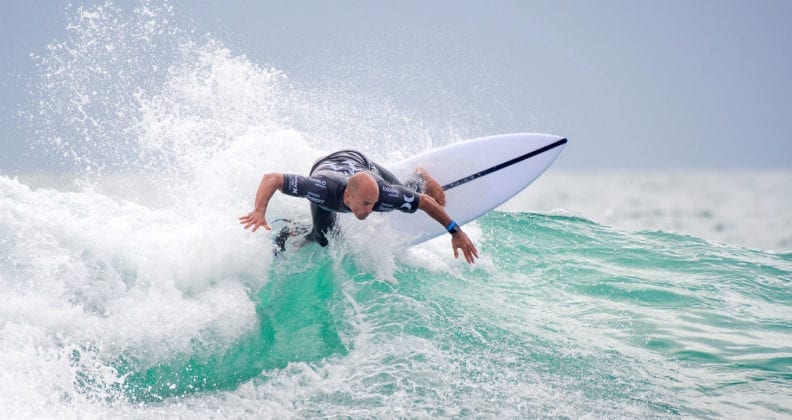
“I love the combination of working with technology and people,” he explains. “I’m very fortunate to be working with client relationships. We discuss new technologies and our latest inventions, and what it could do for their business.”
Perhaps he could reveal what’s behind the cloud, what the next-gen of geeks can look forward to?
“Software-defined networking, or SDN – the shift to artificial intelligence and machine learning. Network techs used to spend heaps of time configuring boxes one by one, but now there’s a controller that sits between the tech and the system, driving the architecture. And we’re starting to build AI elements into it.
“It’s still early days for AI but that’s the vision.”
Preparing for the future is one reason he believes industry and universities should create partnerships, and why he’s willing to help develop teaching programs at local Bay Area universities.
And what advice would he offer students, particularly those who feel driven for innovation but aren’t sure of their direction?
“Industry leaders need to connect with universities, to make sure that graduates have the skillsets we need – which helps us to onboard from those programs.
“For students, there are so many paths to achieving your goals. Just like a network, there are alternative paths to route data to its destination – if you hit a road block, take a different path.”
[1] Professor Heinz Dreher joined the Western Australian Institute of Technology in 1976 and retired from Curtin in 2013, after a 37-year teaching and research career in information technology systems.
